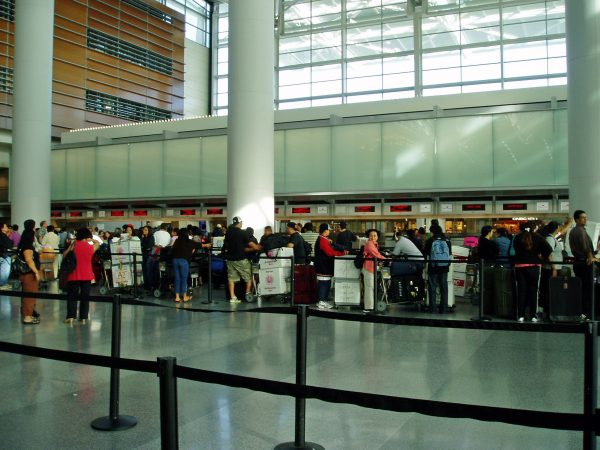This time of year, right in the middle of the holiday season, there’s a beloved, frenzied tradition playing out in Filipino households all around the world, with which reporter Gabrielle Berbey is intimately familiar.
A Balikbayan box is a huge cardboard box (often weighing over 100 pounds) that Filipinos living all over the world send to family members who are still living in the Philippines. The word Balikbayan literally means homecoming in Tagalog.

400,000 thousand of these Balikbayan boxes arrive in the Philippines from around the world per month. But the holiday season is the busiest, with mothers sending to sons, brothers to sisters, and hundreds of thousands waiting in the Philippines for their box.
There is a bittersweet beauty to this box-sending phenomenon. On the one hand, it creates an incredible sense of connection across vast distances, but it’s also a reminder of how many Filipino people have had to leave friends and family behind to venture out into the world.



Comments (6)
Share
I knew of course that it won’t be joyful episode, but the crane pictures anecdote hit so hard I was close to crying.
Definitely bitter-sweet. Not everyone who leaves their home to make a living is well received and well looked after. Or well paid. What on earth does a 100 lb box cost to post?
Here’s an episode about balikbayan boxes from an animated show I worked on for PBS KIDS. https://www.youtube.com/watch?v=M7ESmQM4oVE
I love 99% Invisible and I LOVED this episode. I’m a 48-year-old Filipino American born and raised in New Jersey. There were moments in this episode that brought me to tears: sometimes joyful, sometimes sad. Wonderful job Gabrielle (and Roman.) What a great Christmas present to see this episode this week.
Maligayang Pasko!
As a kid in the 80s, I would see these boxes at the airport when picking up relatives and I never understood why they couldn’t afford a bigger suitcase. I realized later that we were sending them back full of our old stuff and started to appreciate everything that we had growing up in the States. This is a great story that I’m sharing with my kids to help them understand the Filipino culture.
While sending money and good home to support a dictator certainly is unique, Sending goods to relatives is pretty common. My mother would put together boxes for her siblings who still lived in Poland during Soviet occupation. She and my father grew in Poland and later Belgium during World War II, and while they emigrated to the US, many relatives stayed in Poland. When the reality of the Iron Curtain became apparent, “care packages” as I called them became a regular thing. My mother would have to explain to me why she was sending what seemed like these ordinary items like toothpaste or chocolate “back home, things I took for granted. We relied on the respective postal services to get the package there, and it required a visit to the Post Office as there were no online services then. Your story brought back lots of memories and certainly opened my eyes to the reality of the Marcos regime and how it was more than a lady with too many shoes. Thank you.